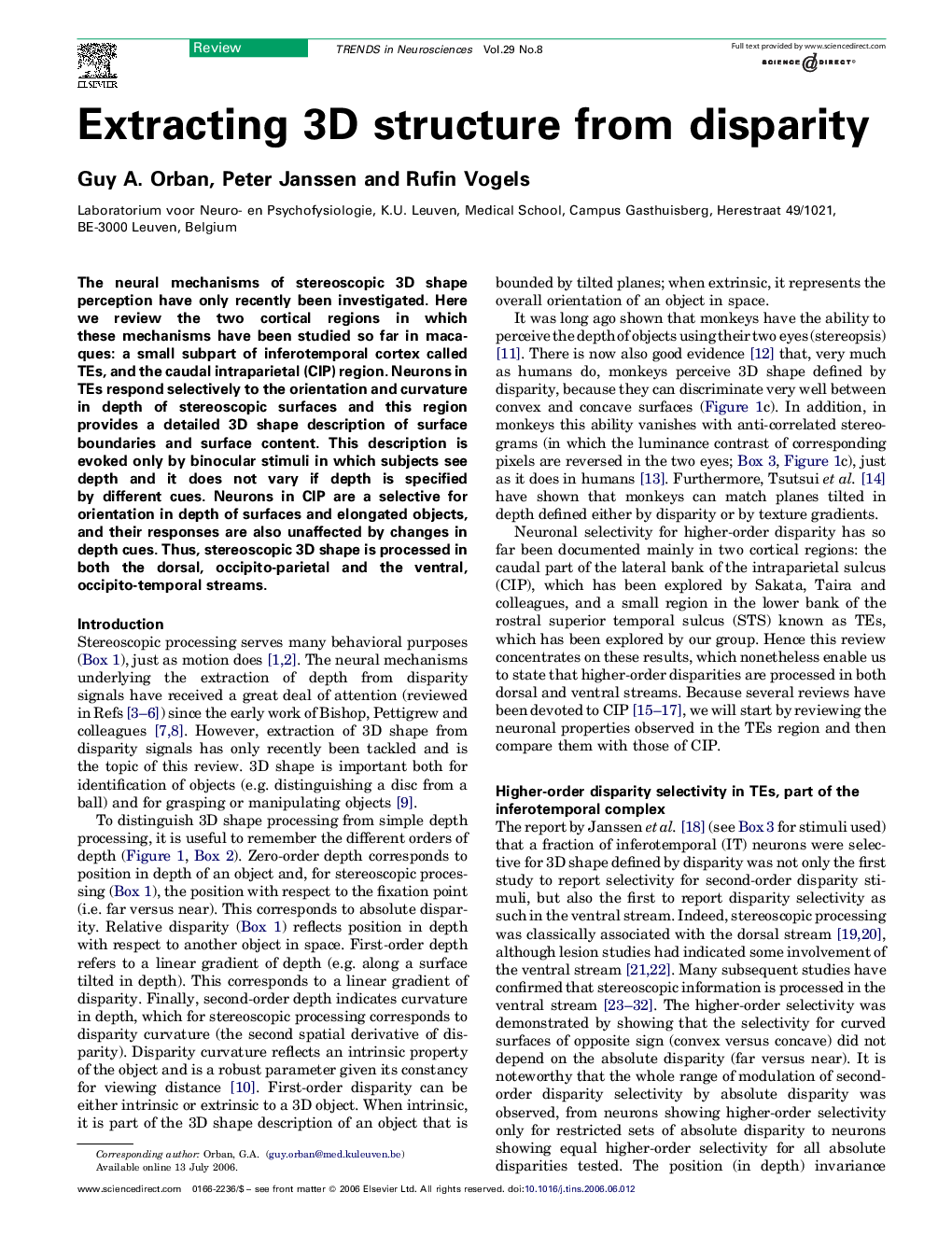| Article ID | Journal | Published Year | Pages | File Type |
|---|---|---|---|---|
| 4355041 | Trends in Neurosciences | 2006 | 8 Pages |
The neural mechanisms of stereoscopic 3D shape perception have only recently been investigated. Here we review the two cortical regions in which these mechanisms have been studied so far in macaques: a small subpart of inferotemporal cortex called TEs, and the caudal intraparietal (CIP) region. Neurons in TEs respond selectively to the orientation and curvature in depth of stereoscopic surfaces and this region provides a detailed 3D shape description of surface boundaries and surface content. This description is evoked only by binocular stimuli in which subjects see depth and it does not vary if depth is specified by different cues. Neurons in CIP are a selective for orientation in depth of surfaces and elongated objects, and their responses are also unaffected by changes in depth cues. Thus, stereoscopic 3D shape is processed in both the dorsal, occipito-parietal and the ventral, occipito-temporal streams.
